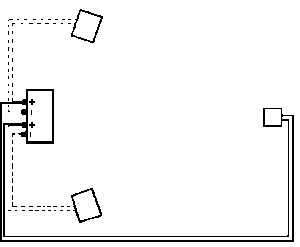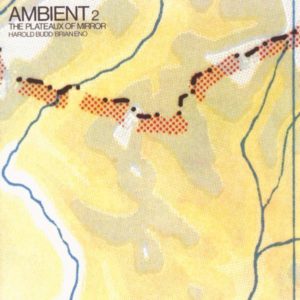Now this will always stick in memory. Once upon a time, in March 1982, the month of its release, ON LAND found its way to my little house in deep Bavaria, on a hillside, a quite desolate no-man’s land for a townie, but fitting well to the haunting atmospheres of the album. It has been a companion of awe and wonder ever since then, and I really installed this ambient speaker system in my living room. Though it was definitely a tiny, ugly and cheap third speaker, I loved that experience. Now we live in different times, and surround systems are no longer that expensive. Thus a quad or 5:1-mix would be easy going, and, for a record like ON LAND, a perfect option. But here we go, with the half-speed vinyl remaster that in fact sounds beautiful, opening up even more depths. At least that’s what I’m feeling, I’m surely not painstakingly comparing it with old pressings. And everybody who has the 2005 cd remaster can happily live forever with that one. Brian had worked on the album quite a while during his New York years, and I was living literally at the end of a world, in Bergeinöden (the name of the village, no pun intended), with great music (Jazz by Post had been my favourite dealer), hot love, drama, Neil Young in concert, weekend travels to Schwabing, my first Go-Betweens record, Cortazar books, my salad days of volleyball, and no happy endings. But it was worth the trip, at least that‘s what I keep telling myself. Scary Monsters were all around, but somehow I managed to remain in light. (m.e.)

I regard this music as environmental: to be experienced from the inside. Accordingly I considered releasing a quadrophonic version of it, an idea I abandoned upon realising that very few people (myself included) own quadrophonic systems.
However, I have for many years been using a three-way speaker system that is both simple to install and inexpensive, and which seems to work very well on any music with a broad stereo image. The effect is subtle but definite – it opens out the music and seems to enlarge the room acoustically.
In addition to a normal stereo hifi system all that is required is one extra loudspeaker and some speaker cable. The usage of this speaker in the three-way system is such that it will not be required to handle very low frequencies: therefore a small or „mini“ speaker will be adequate.
As shown in the diagram, the two terminals of the new speaker are connected to the two positive (red) speaker connectors on the amplifier. This speaker is located somewhere behind the listener – at the apex of a triangle whose base is formed by the original loudspeaker set-up. One of the unexpected benefits of this system is an increase in the usable listening area – almost any point in the room will yield good (although not necessarily „accurate“) stereo sound.
I arrived at this system by accident, and I don’t really know why it works. What seems to happen is that the third speaker reproduces any sound that is not common to both sides of the stereo – i.e., everything that is not located centrally in the stereo image – and I assume that this is because the common information is put out of phase with itself and cancels out.
More technically, the lower the impedance of the added speaker, the louder it will sound. If it is found to be too loud (although this rarely seems to happen), you can either insert a potentiometer (6-12 ohms, at least 10 watts) into the circuit, or move the speaker further away.

